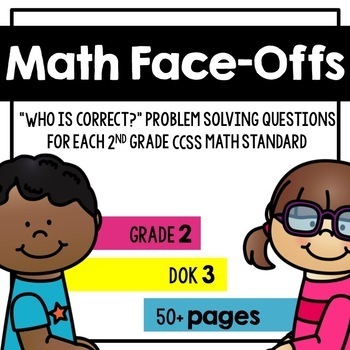2nd Grade Math Faceoffs Error Analysis and Problem Solving
- PDF
- Google Apps™

What educators are saying
Description
These print-and-go or digital problems ask students to solve a problem, find the error, explain the error and therefore decide who was correct! Each problem targets a misconception in mathematical thinking. By identifying and explaining the error, the misconceptions second graders often have should be addressed and rectified.
This resource is broken down by strand.
Operations and Algebraic Thinking - 10 problems
Numbers and Operations in Base Ten - 22 problems
Measurement and Data - 20 problems
Geometry - 6 problems
There are 2 problems per standard and substandard, for a total of 58 problems.
Please check out the preview for some samples!
Students need some intervention before they'll be successful with this activity? Try One Step Word Problem RTI, which is specifically designed for 2nd graders who need ALL addition and subtraction problem types to be mastered by the end of their grade.
This resource is also available for 3rd grade!





